Introduction
Just imagine this:
You’re coding late at night, stuck on a tricky bug. Your coffee’s gone cold, and frustration’s creeping in.
Then, an AI coding assistant swoops in, suggesting the perfect fix in seconds. That’s the magic of AI in software development!
AI isn’t a buzzword anymore. It’s real. And it’s right there, inside your code editor, whispering suggestions, completing functions, and helping you move a little quicker.
If you write code, you’ve probably felt it. That moment when you pause, wondering what comes next, and suddenly, the suggestion appears. Smart. Context-aware. Sometimes even better than what you had in mind.
That’s AI in software development today. Quietly making things smoother, line by line.
And it’s growing fast.
The global AI in software development market was estimated at $674.3 million in 2024. It’s expected to hit a staggering 15,704.8 million by 2033.
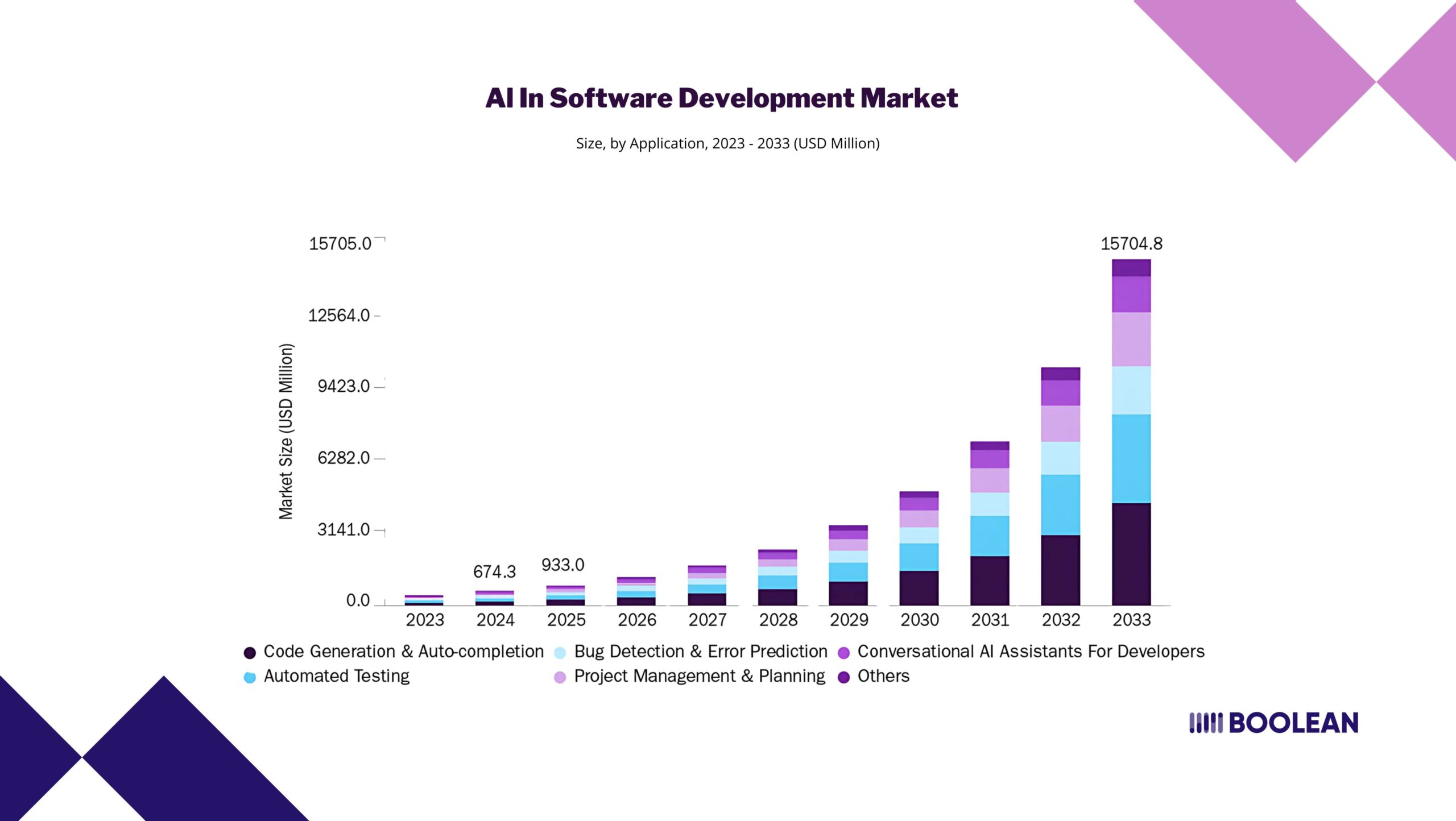
That’s not just hype. That’s momentum. Real investment. Real usage. And more teams are adopting these tools every day.
Zoom in a bit, and you’ll see another big number: the AI development tool software market is projected to reach $9.76 billion in revenue by 2025. Tools that help developers write, test, and improve code are taking center stage.
Why is this happening?
Because writing software has never been simple. There’s logic, structure, pressure, deadlines, and so much context to keep in your head.
AI coding assistants don’t fix everything, but they sure make the process easier. They reduce mental load. They support learning. And sometimes, they catch things we miss.
It’s not just about big tech companies either. From freelancers to enterprise teams, software development in AI is finding its way into everyday workflows.
Especially in regions where tech adoption moves fast, like the AI software development in USA space.
So what does all this mean for you?
It means now is the right time to understand what these tools can actually do.
In this post, we’ll look closely at three of the most talked-about AI tools: GitHub Copilot, Amazon CodeWhisperer, and Tabnine AI. Each has its strengths. Each fits different needs.
Whether you’re curious, cautious, or ready to pick one today, you’ll get something useful here.
Let’s break it down.
Why More Teams Are Turning to AI Tools for Coding
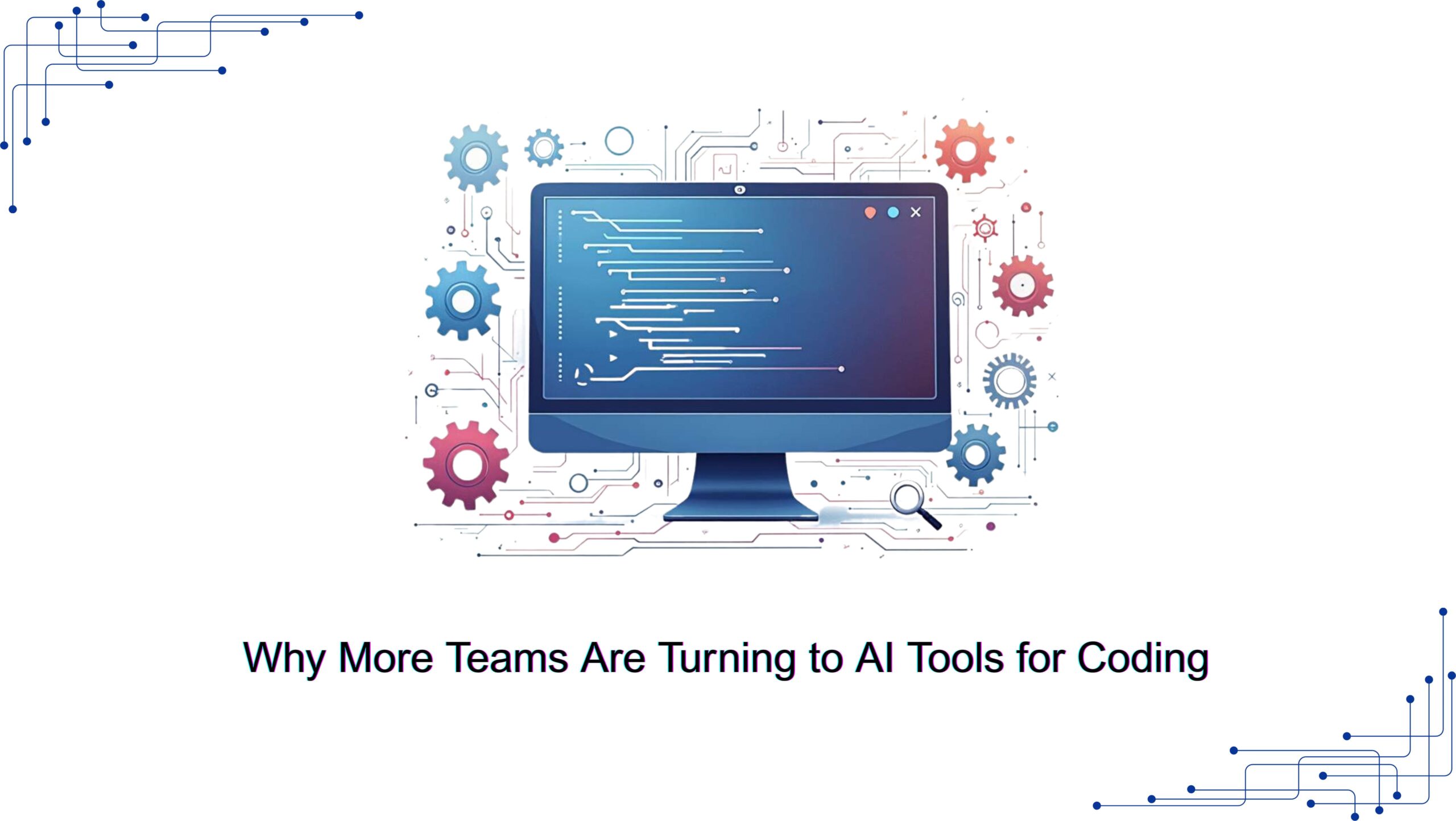
Let’s be honest, writing code can be exhausting.
It’s not just about knowing syntax. You have to remember edge cases, think through performance, keep things secure, and hit deadlines. The pressure adds up.
That’s why AI coding assistants are getting attention. They’re like extra eyes and hands, quiet, fast, and helpful. They offer suggestions as you type. Catch mistakes early. And sometimes, they just help you think a little clearer.
It’s not about replacing developers. It’s about supporting them.
And it’s working.
Whether you’re building apps or large systems, more teams are leaning on developer AI tools to help them move faster without losing quality.
From smart suggestions to code generation, AI developer tools are changing how we write and review code.
Tools like GitHub Copilot, Amazon CodeWhisperer, and Tabnine AI are popular examples of this shift.
These are among the best AI code assistant tools available right now. They help with everything from AI code suggestions and test generation to secure code practices and real-time code help.
The AI software development in USA space is growing steadily. American tech teams, startups, and enterprises alike, are adopting AI pair programming tools to reduce burnout and improve output.
Many have already added tools like Tabnine and CodeWhisperer to their daily stack.
So why now?
Because people want help. Not hype. Something that saves time. Something that makes sense. Software development in AI is no longer limited to experimental teams; it’s becoming normal across the board.
If you’re a developer, you’re not late. You’re right on time.
What Are AI Coding Assistants?
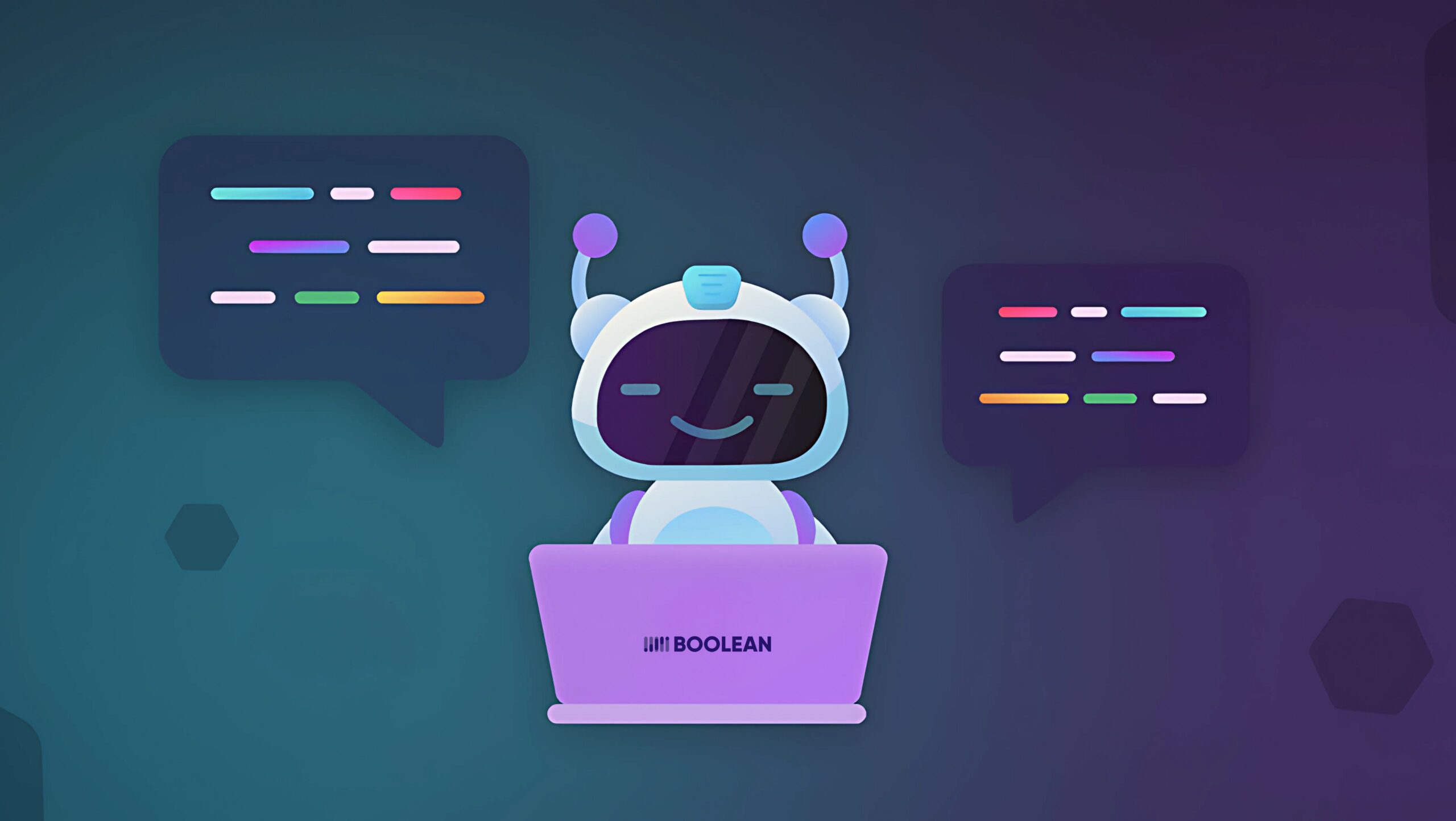
Let’s keep it simple.
An AI coding assistant is a tool that helps you write code. It suggests completions, fills in boilerplate, catches issues early, and even explains complex logic.
Think of it like a smart AI coding partner, quietly working next to you, line by line.
You still control the logic. You still make the decisions. But the assistant keeps things moving.
These tools don’t just look at syntax. They consider context. What you’ve already written. What might you be building next?
Some of them even understand natural language, so you can type a comment like “create a login function”, and they’ll suggest working code.
So, where do they fit into real projects?
AI in software development has moved beyond side projects and personal hacks.
These assistants are now helping teams build large-scale, production-level systems. They’re becoming trusted tools for full-stack apps, backend services, APIs, and more.
And it’s not limited to early adopters anymore.
Across the U.S., AI software development in USA is rising fast. Developers in startups and enterprises alike are choosing AI coding assistants to boost speed and reduce friction. It’s a practical shift, not just a trend.
It also raises a good question: how do you pick one?
That’s where code assistant comparison becomes useful. Some tools are lightweight and fast. Other people are designed for large teams, which have security facilities and team-sharing options.
Depending on what you want, the best assistant for you can seem very different from choosing someone else.
Read Also: Top AI Tools for Android App Development
Whether you are writing single or working with a team, the point is the same: software development in AI is feeling light coding, slightly more collaborative, and, for many, too much fun.
Overview of the Top AI Coding Assistants
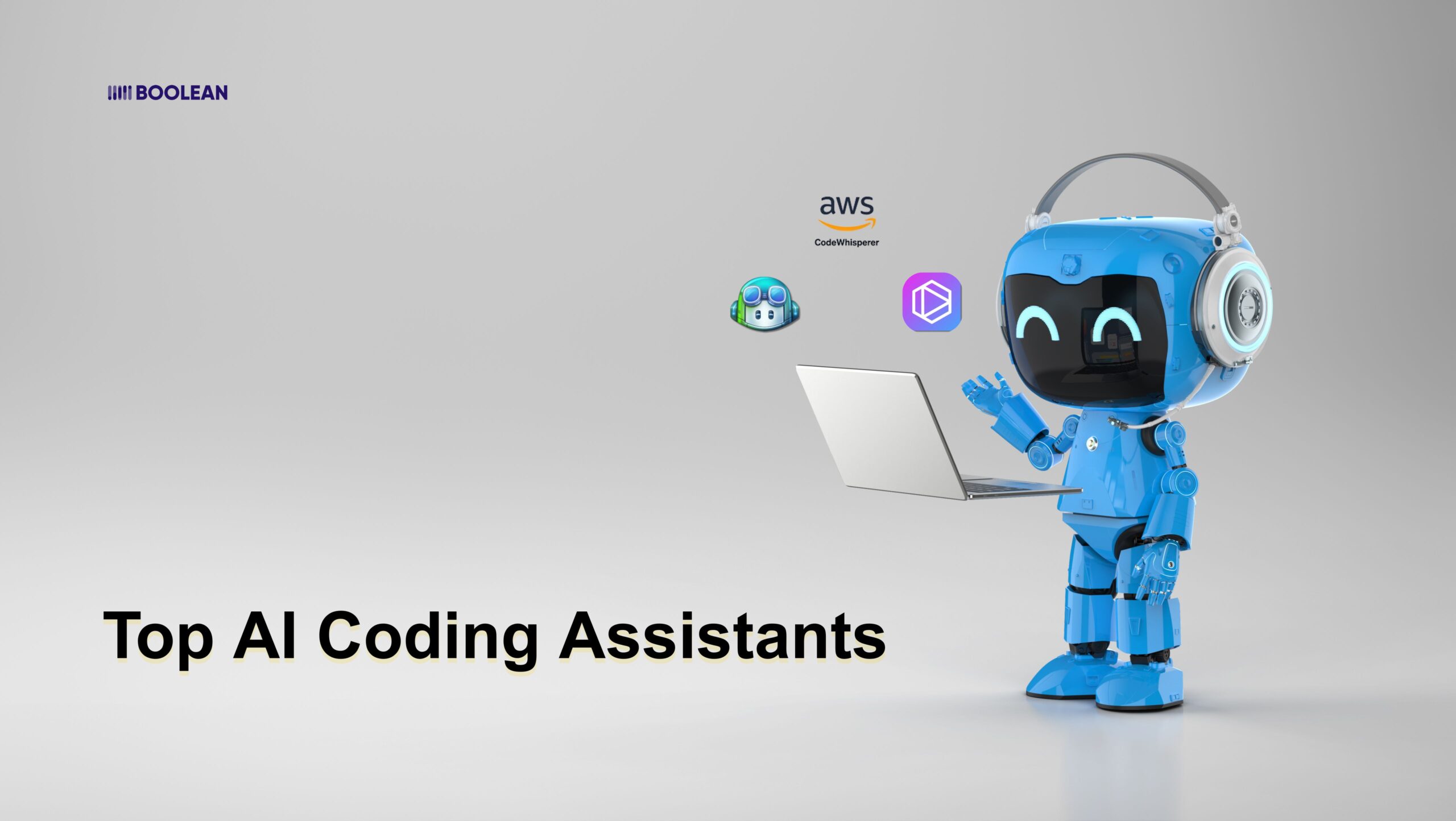
You’ve got choices. And that’s a good thing.
AI in software development has opened up a new kind of toolkit, one where your coding partner doesn’t need coffee breaks or sleep. But not all AI coding assistants work the same way.
Some are great at quick fixes. Others are better for cloud-focused workflows or strict data policies.
Here’s a breakdown of the three most popular names developers are using today: GitHub Copilot, Amazon CodeWhisperer, and Tabnine AI.
If you’ve spent time on dev Twitter or in any VS Code setup lately, you’ve probably heard of GitHub Copilot.
It’s smart. It’s fast. And it’s gotten better over time.
Developers use it for everything from writing boilerplates to generating tests and quickly catching small errors. This is particularly helpful to intensify the tasks you have done a million times.
What stands out is the performance in completing the Copilot code. It understands what you are working on – your variables, your actions, even your comments – and tries to suggest what comes next, in a way that makes sense.
Many say it boosts real productivity. That’s why GitHub Copilot’s benefits for real-world productivity are often mentioned in dev circles. It fits naturally into your routine, without feeling like it’s in the way.
It’s a strong option for people who want help without handing over control.
Amazon CodeWhisperer may not be as attractive as a copilot, but it is incredibly useful, especially if your projects run on AWS.
It understands cloud services. Really well.
Whether you’re working with Lambda, S3, or IAM, it gives you suggestions that save time and prevent silly mistakes.
This tool is built with AWS-centric development in mind. If your stack leans into Amazon’s cloud, CodeWhisperer just fits.
It also works nicely with AI pair programming tools, helping teammates stay on the same page as they write, refactor, or review code. Many consider it one of the best AI developer tools for cloud-heavy teams.
It’s not trying to do everything. But what it does, it does pretty well.
Then there’s Tabnine AI, a favorite among developers who value privacy and speed.
It doesn’t send your code to the cloud by default. That’s a big win for companies and developers who need to keep things local. If you care about control,
Tabnine’s privacy-focused code completion is worth a look.
It’s lightweight and easy to use. You won’t find bloated features or overcomplicated menus. Just smart suggestions that get better the more you use them.
For teams that need AI tools for secure enterprise software development, this one checks a lot of boxes. It’s often praised for striking a balance between simplicity and control.
And like the others, it supports a wide range of languages and IDEs. Nothing fancy to set up. Just install and code.
So… Which One’s Right for You?
It depends on what you need.
Want strong context and fast completions? GitHub Copilot is hard to beat.
Working in AWS every day? Amazon CodeWhisperer makes sense.
Need more control over your data? Tabnine AI is probably your best pick.
That’s the thing about software development in AI right now. It’s not about finding “the one best tool.” It’s about finding the right fit for your workflow, your goals, and your team.
And as AI software development in USA continues to grow, more developers are finding that one of these three assistants is exactly what they’ve been missing.
The tools are here. The options are solid.
And the future of AI in software development? It’s already on your screen.
Let’s take a closer look at how GitHub Copilot, Amazon CodeWhisperer, and Tabnine AI actually perform, what they’re good at, where they shine, and what kind of developer each one suits best.
GitHub Copilot: Features, Pricing & Benefits
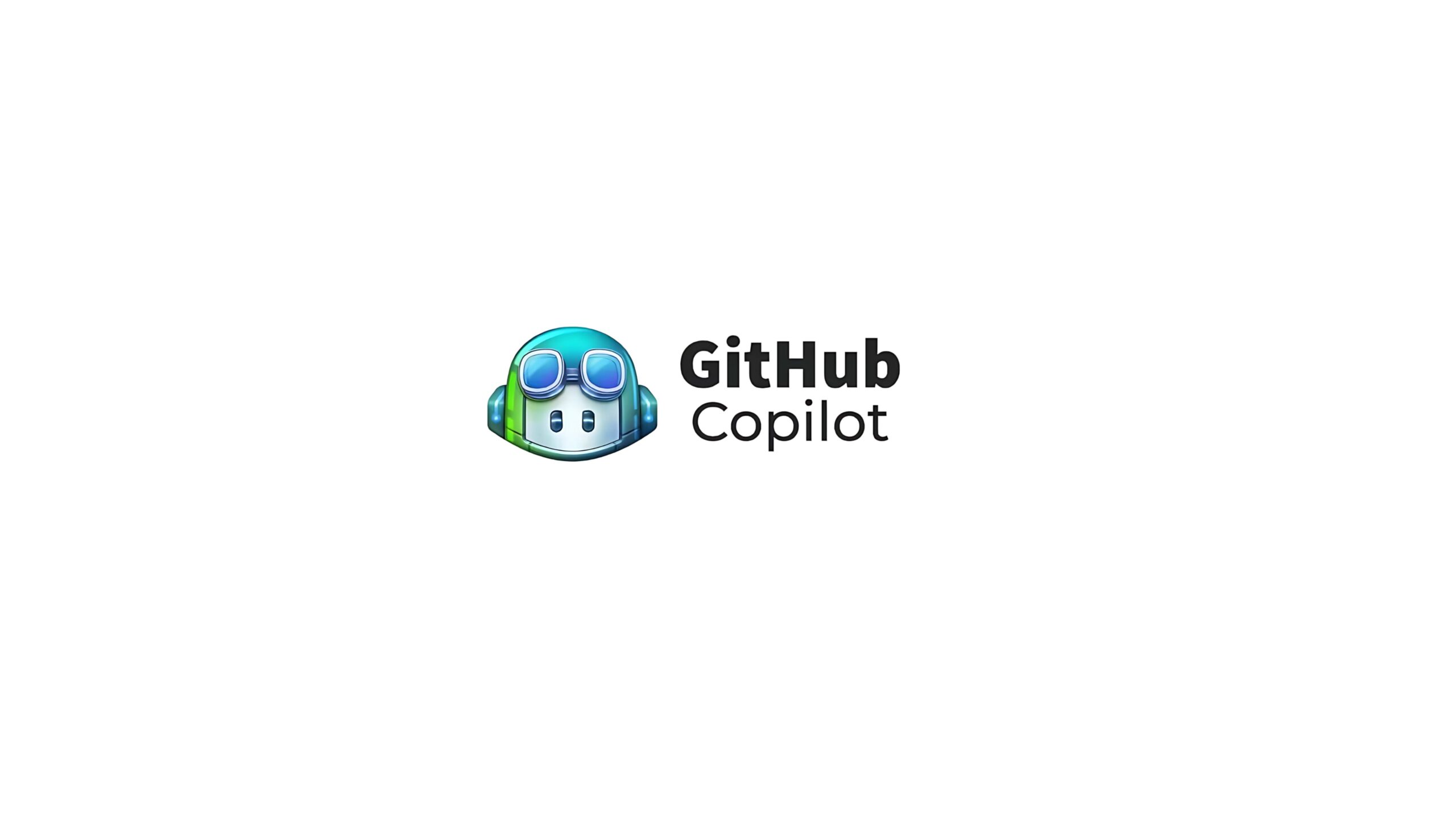
GitHub Copilot has quickly become one of the most talked-about tools in AI in software development.
And for good reason, it works where you work, thinks like a developer, and responds in real time.
Whether you’re building solo or part of a larger team, this AI coding assistant brings value right inside your intelligent code editor.
So what’s actually behind the buzz?
Key GitHub Copilot Features
- Fast code completions as you type, functions, loops, tests, and more.
- Understands comments in plain language and turns them into working code.
- Trained on massive open-source repositories for wide language coverage.
- Integrates easily with VS Code, JetBrains, Neovim, and more.
- Improves over time because it learns your pattern.
The Copilot code completion performance is one of its biggest strengths. It’s quick, smart, and usually a step ahead of where your fingers are going next.
Need a utility function you’ve written 10 times before? Copilot will probably offer it before you even finish typing the function name.
That’s the magic of an AI coding partner that stays out of your way but shows up when you need it.
Copilot for Teams: The Enterprise Side
For larger orgs, Copilot Enterprise adds some extras.
It integrates with your private repos. You get better security settings and user controls. And it plays well with SAML SSO and other equipment that cares for big teams.
It creates a serious player in the enterprise AI coding space, especially for teams in search of streamlining workflows without giving visibility or control.
Copilot Pricing
Copilot pricing is pretty simple.
- Individual plan: $10/month or $100/year.
- Business plan: $19/month per user, includes Copilot Enterprise features.
There’s also a free tier for verified students and contributors to popular open-source projects, which makes it accessible to a lot of people starting out in tech.
Why Developers Like It
The real Copilot benefits come down to speed and clarity.
It helps cut through decision fatigue. You don’t need to stop and Google that syntax again. You don’t have to hunt down that one Stack Overflow thread.
It’s not perfect, but it’s often “good enough” to keep you moving. And that’s a huge win.
For many, Copilot isn’t just a plugin. It’s a quiet teammate. A real developer assistant AI that fills in the blanks while letting you stay focused on the logic.
And if you’re comparing tools like Tabnine vs Copilot, it’s clear Copilot leans more on the side of bold, predictive suggestions, where Tabnine focuses more on privacy and control.
Copilot fits right into the flow of modern software development in AI. Whether you’re writing in Python, JavaScript, Go, or C#, it keeps up with you.
If you’re looking for an AI code generation tool that feels natural, responds quickly, and gets smarter the more you use it, Copilot is a solid pick.
It’s not just code suggestions. It’s a smarter way to code.
Looking beyond code editors? You might also want to explore the best AI chatbots in 2025 for mobile apps and web platforms.
Amazon CodeWhisperer: Features, Use Cases & Real-World Fit
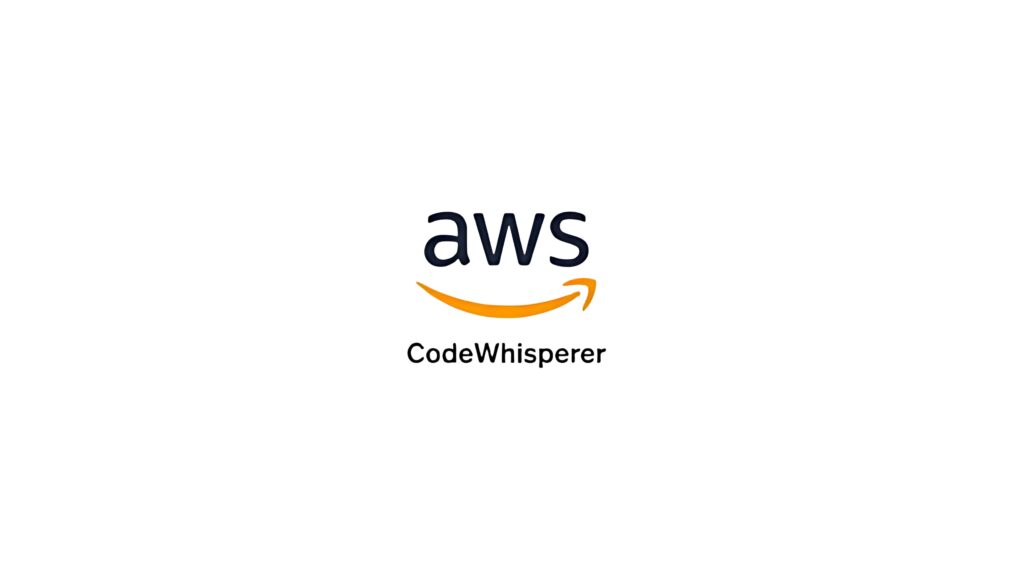
If your work is rooted in AWS, then AWS CodeWhisperer may already be on your radar. And if not, it should be.
This assistant was built with cloud-heavy teams in mind. More than just another auto-suggestion tool, it offers real-time code help with a strong focus on AWS-centric development.
Key CodeWhisperer Features
- Auto code completion that understands both context and AWS services.
- Deep CodeWhisperer AWS integration (think Lambda, S3, DynamoDB, IAM).
- Multi-language support including Python, Java, JavaScript, and more.
- Can scan code for security issues.
- Works directly in IDEs like VS Code, JetBrains, and Cloud9.
What makes it stand out? It doesn’t just guess based on keywords. It actually understands AWS workflows, making it a reliable source of intelligent coding assistance.
When It Works Best
If you’re already deep into software development in AI, you know that context matters. And when your stack is loaded with cloud services, that context is AWS.
CodeWhisperer for AWS-centric development offers smart, relevant suggestions based on how those services actually work together. You’re not getting random blocks of code. You’re getting stuff that fits your use case.
This makes it a practical choice for enterprise AI coding, especially in teams already building with Amazon Web Services.
Real-World Feedback
What does a typical CodeWhisperer review sound like?
It’s usually something like this:
“It’s not flashy, but it’s helpful. It saves time. Especially with repetitive AWS-related code.”
And that’s the point. You won’t find fancy animations or distracting popups. But you will get a cleaner, faster workflow, especially if you’re tired of writing yet another IAM policy or boilerplate Lambda function.
Developers looking for real-time code help in cloud-heavy environments often find this assistant reliable and consistent.
For projects working closely with the hardware or needing quick feedback, real-time edge AI in mobile apps is worth looking into.
Compared to Other Tools?
In code assistant comparison discussions, AWS CodeWhisperer usually lands as the quiet workhorse. It might not have the creative flair of GitHub Copilot or the ultra-private nature of Tabnine, but it fits beautifully in environments where AWS is already at the center.
And for AI in software development, that’s becoming more common every day.
So, if you want an assistant who “gets” AWS, works quickly, and focuses more on doing the job than showing off, this is a strong pick.
Tabnine AI: Features, Privacy & Why Developers Trust It
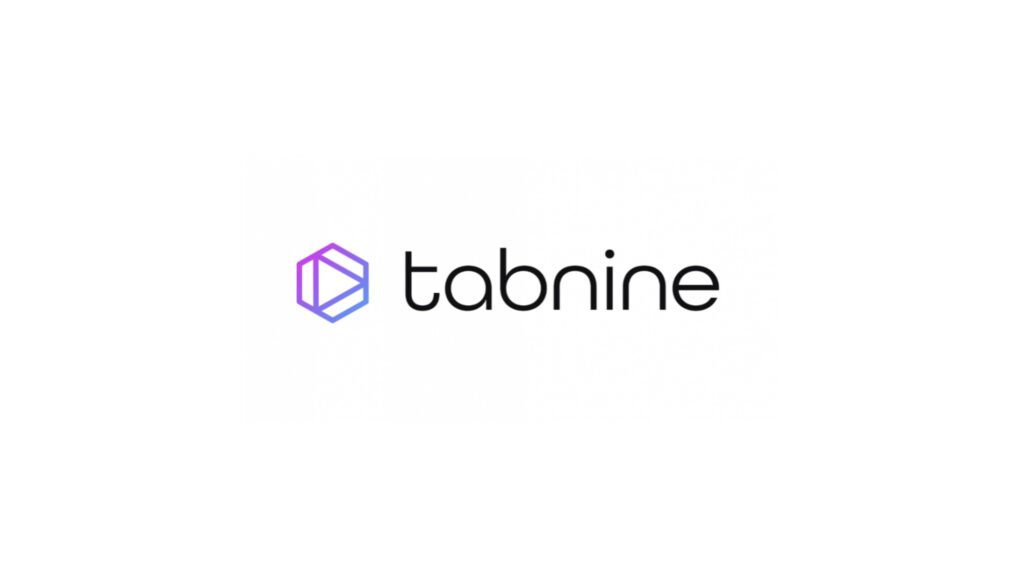
Tabnine AI doesn’t try to be the loudest in the room. Instead, it focuses on being reliable, safe, and smart.
And for a lot of developers, that’s exactly what they’re looking for in an AI code assistant.
If privacy and speed matter to you, Tabnine is worth a serious look.
Key Tabnine Features
- Fast, auto code completion in over 20 languages.
- Lightweight and simple to install.
- Works across VS Code, JetBrains, Eclipse, and more.
- Option to run locally or in private cloud environments.
- Learns your coding style over time.
One of the strongest points? Tabnine privacy-focused code completion. For developers or teams working on sensitive code, it means you don’t have to send anything to third-party servers.
That level of control matters more than ever.
It fits neatly into any intelligent code editor without being intrusive. You just install it, and it gets to work.
Privacy by Design
Tabnine has made a name for itself by putting privacy first. Unlike other tools that rely on cloud-based models, Tabnine can be fully local.
This makes it especially appealing for enterprise use or teams bound by strict compliance rules.
In software development in AI, privacy often gets left behind. Not here.
This is where Tabnine privacy stands out, and why so many developers keep it in their daily workflow.
Great for Pair Programming, Too
Even though it’s strong on privacy, Tabnine also works well in shared environments. Teams use it as part of their AI pair programming tools stack to keep code flowing without friction.
Whether you’re in a team code review or debugging something solo, Tabnine gives quick, useful AI code snippet suggestions that help you stay focused.
What Developers Are Saying
Most Tabnine reviews talk about two things: how fast it feels, and how non-invasive it is.
You won’t get overly long suggestions or bloated explanations. Instead, you get sharp, to-the-point completions that feel like they were written by someone who knows how you code.
That’s what makes Tabnine a favorite in lists of the best AI code assistant tools. It’s not trying to guess wildly, it’s just trying to help you finish what you started.
If you’re thinking of building something bigger with AI, here’s a helpful guide on how to build ChatGPT-powered apps for business use.
Is It Right for You?
If you’re working on projects where privacy, speed, and local control matter, Tabnine AI could be your best bet.
It’s an excellent tool for developers who want AI in software development without giving up security or simplicity.
And in today’s world of developer assistant AI tools, that balance is rare and valuable.
Copilot vs CodeWhisperer vs Tabnine: A Detailed Comparison
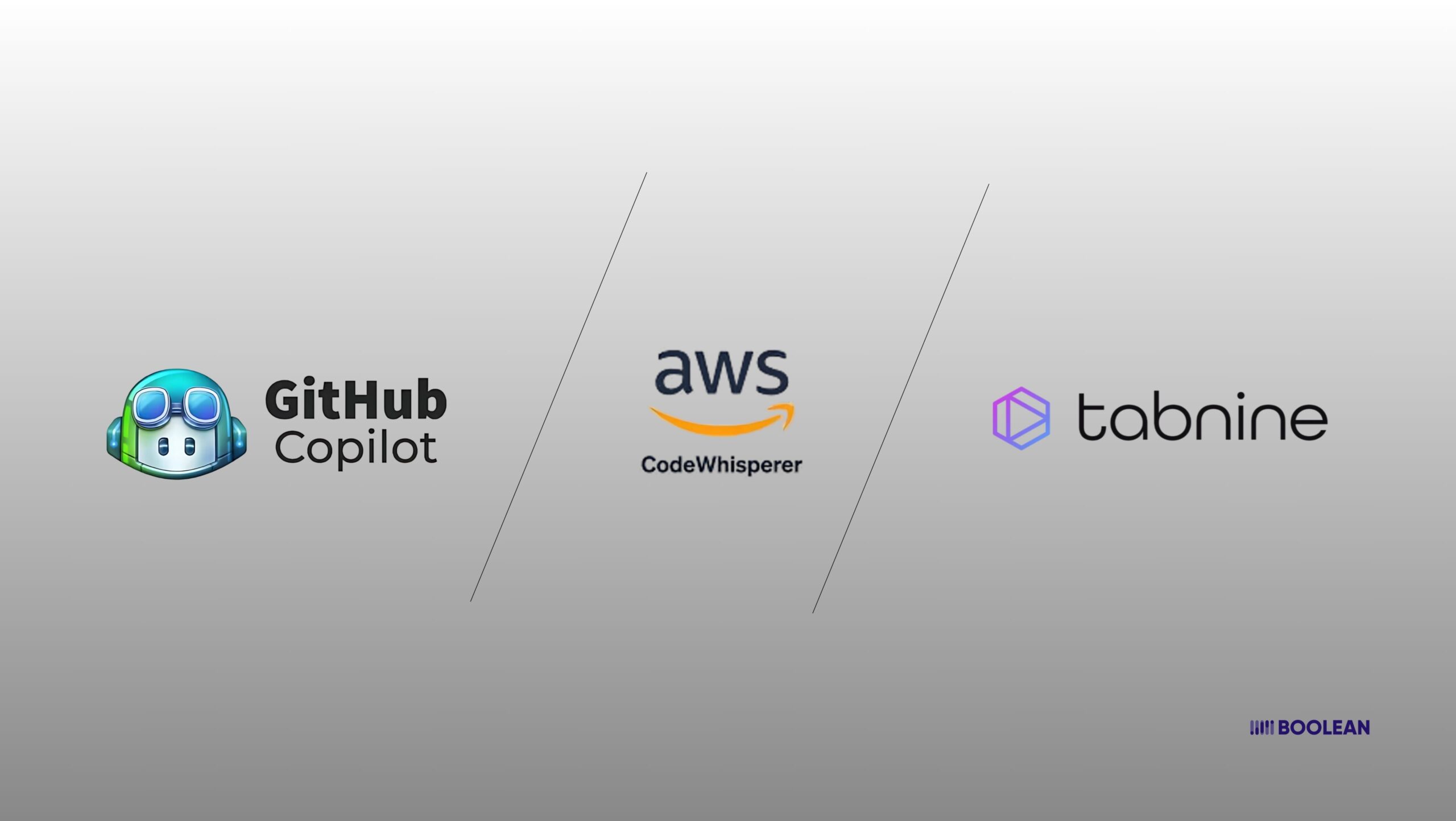
So far, it is clear that AI in software development is no longer about publicity; it is part of how we make it.
Whether you are a single developer, part of a startup, or working in a large venture, choosing the right assistant can make your coding sessions smoother and faster.
Here’s a quick breakdown:
| Feature / Tool | GitHub Copilot | Amazon CodeWhisperer | Tabnine AI |
|---|---|---|---|
| Best for | General-purpose development, fast productivity | AWS-focused teams, cloud-heavy apps | Privacy-conscious devs, secure environments |
| Auto Code Completion | Smart & fast | Context-aware for AWS | Lightweight & quick |
| Privacy / Local Use | Cloud-based only | Some cloud dependencies | Fully locally available |
| AI Code Snippet Suggestions | Rich, dynamic | Contextual AWS snippets | Short, focused, and secure |
| IDE Integration | VS Code, JetBrains, Neovim | VS Code, JetBrains, AWS Cloud9 | Most major IDEs |
| Best AI Code Assistant Tools List? | Frequently ranked | Recognized for AWS developers | Privacy-first pick |
| Real-Time Code Help | Strong | AWS-focused | Minimal but helpful |
| Pair Programming Suitability | Natural flow with the team | Good for AWS teams | Great for secure team setups |
| Enterprise AI Coding Readiness | With Copilot Enterprise | Built for AWS environments | Strong with privacy-first organizations |
| AI Developer Tools Focus | Broad use cases | Cloud-native and DevOps-oriented | Focused, secure, streamlined |
| Copilot Pricing / CodeWhisperer Access | $10–$19/month | Free tier + pro plan | Free + Paid (Team licenses) |
How to Integrate AI Tools into Your Workflow
You don’t need to overhaul everything to start using AI.
In fact, adding an AI coding assistant to your setup is often as simple as installing a browser plugin or IDE extension.
Here’s how most developers ease into it:
- Pick the right fit. If you’re working with AWS all day, try CodeWhisperer. Need flexibility? Go with Copilot. Want privacy? Tabnine AI is probably your best choice.
- Install and explore. Just add the tool to your code editor, VS Code, JetBrains, or whatever you use daily. Most setups take just a minute or two.
- Start with smaller tasks. Let it help with simple functions, repeat code patterns, or common AI code snippet suggestions.
- Check everything. These tools are helpful, but they’re not perfect. Always review the output like you would with a junior dev or code partner.
- Set your comfort level. Use suggestions that make sense. Ignore the ones that don’t. You’re still in charge.
Adding AI developer tools to your workflow should feel like a boost, not a burden. Keep it light at first. If it helps, great. If not, you can always dial it back.
Partner with a Leading AI Software Development Company in the USA
Building with AI sounds exciting, but actually making it work? That can be a lot. Between deadlines, limited in-house experience, and the fast-moving tech, it’s easy to get stuck.
That’s where Boolean Inc. steps in. They’re one of those rare teams that doesn’t just code, they actually listen.
They’re great at:
- Making smart tools feel simple
- Helping teams speed things up without losing control
- Keeping your code and data secure
- And honestly, just being easy to work with
You don’t need to have it all figured out. You just need a team that knows how to get you from idea to working solution, without wasting your time or budget.
If you’re thinking about AI in software development, but want someone you can trust to do it right (and not overcomplicate it), Boolean Inc. might be your best next step.
Conclusion
AI isn’t magic, but it’s really starting to feel helpful.
Tools like GitHub Copilot, Amazon CodeWhisperer, and Tabnine AI aren’t here to replace developers.
They’re just here to take some of the weight off. Less repetitive typing. Faster feedback. More time to focus on the actual logic behind your code.
- Each tool has its strengths.
- Copilot is quick and flexible.
- CodeWhisperer clicks well with AWS projects.
- Tabnine keeps things tight if privacy is a concern.
You don’t have to use all of them. You just have to pick what works for you, your team, and your workflow. That’s it.
And if you’re thinking bigger, like integrating AI into your product or building something custom, you don’t have to figure it all out alone. Teams like Boolean Inc. know how to help without slowing you down.
Take what makes sense. Leave what doesn’t.
AI in software development isn’t the future; it’s already part of how we build now.
And the good news? You’re not late.
FAQs
- Do I need to know machine learning to use AI coding assistants?
Nope. These tools work right inside your code editor. You don’t need any AI background, just your usual dev setup.
- Are tools like Copilot and Tabnine safe to use for enterprise code?
Yes, but it depends on how you configure them. Tabnine offers privacy-focused options, and Copilot has an enterprise tier for more control.
- Can AI tools replace junior developers?
Not really. They help with routine tasks, but human thinking, problem-solving, and code reviews still matter a lot.
- What’s the cost of using GitHub Copilot?
As of now, Copilot offers plans starting around $10/month, with extra features in the enterprise version.
- Which AI coding tool is best for AWS developers?
Amazon CodeWhisperer is built with AWS integration in mind; it’s often the best pick for cloud-heavy teams.







